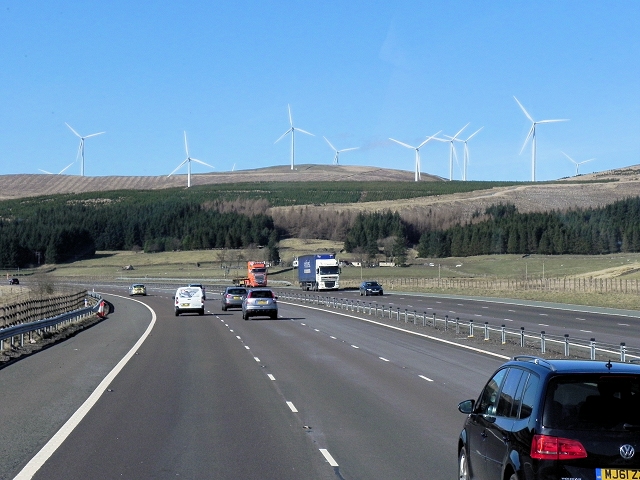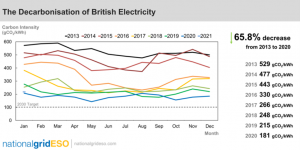
- Category:
- News
As green as it gets?
“Electric vehicles are not environmentally friendly because the electricity to charge them comes from coal”.
This is one of the most prevalent myths about EVs, yet one of the easiest to debunk. Yes, the dirty little secret about EVs is that they are only as green as the electricity is used to manufacture and charge them. However, there’s growing research that shows when EVs are powered by the dirtiest electric grid, they still emit fewer emissions than conventional cars.
The question that arises now is how can EV drivers reach their full green potential?
Going Green
EVs are as clean as the power they use to keep moving. The overall benefits EVs can bring depend of course on the mix of generation sources on the grid used to charge them.
Easter Monday was the greenest day on record for the UK’s electricity system. Carbon intensity dropped to 39 gCO2/kWh, smashing the previous record set in May last year of 46 gCO2/kWh. It is obvious that the electricity in the UK is green and it’s getting cleaner and cleaner.
The UK’s electricity system saw the greenest year on record in 2020. Coal provided just 1.6% of UK’s electricity in total in 2020, compared with around 25% five years ago. The 2020 lockdown saw UK running coal-free for the longest period recorded of 67 days. Tremendous progress has also been made in reducing the carbon intensity by 65.8% between 2013 to 2020.
Over a year, just one EV on the UK roads could save 1.5 tonnes of CO2 compared to a conventional car. To put it simply, it would take 71 fully grown oaks to remove the equivalent CO2 emissions from the atmosphere in a year.
The emissions are also dramatically improved when low carbon electricity is used. Regional variations in low carbon electricity can also improve the emissions. For example, an EV charged in Scotland, where renewable energy generation met 97.4% of electricity consumption in 2020, will release less CO2 into the atmosphere than if the same EV was charged elsewhere in the UK.
Getting Greener
National Grid have developed a tool that takes into account energy and weather data to estimate how green the grid will be up to two days ahead, allowing EV drivers to select the greener day to charge their car.
This could then be automated with a smart charger set to power up an EV when it is most environmentally friendly to do so. Charging at off-peak times allows the EV driver to take advantage of the greenest possible energy, as the electricity grid is not overloaded and does not need to rely on fossil fuels.
Vehicle-to-Grid technology goes a step further and increases the positive impact EVs already have in decarbonising the transport sector, by facilitating the integration of renewable energy sources into the grid. EVs can store the electricity generated by renewables and then discharge it at times of peak energy demand or times that renewable energy is not available.
Achieving the Greenest
The most obvious way to achieve the greenest possible charging is to plug your car directly into solar panels or a wind turbine. And this is possible. EV charging can be paired with on-site renewable energy generation.
It is unquestionable that not every place is suitable for renewable system installation though, so another option is for the driver to get a green tariff. With most green tariffs, the energy usage is matched with an equivalent amount of energy either bought or generated from renewable sources. In this way, EV drivers can source green energy to charge their EVs without having to take on the responsibilities of being a renewable system owner-operator.
Still not convinced on how green and sustainable are EVs?
“Greenness” in charging an EV is inevitable. Going electric is a step into a world full of green, greener, and maybe, the greenest opportunities. To achieves this, EV drivers will have to play their role by setting their cars to charge in the greenest available way. While EVs do have some minor impact on the environment, they are still a great option for decarbonising the transport sector, and they can be even more sustainable since EVs and renewables are truly a match made in heaven.
Get in touch to see how you can lower your emissions.
